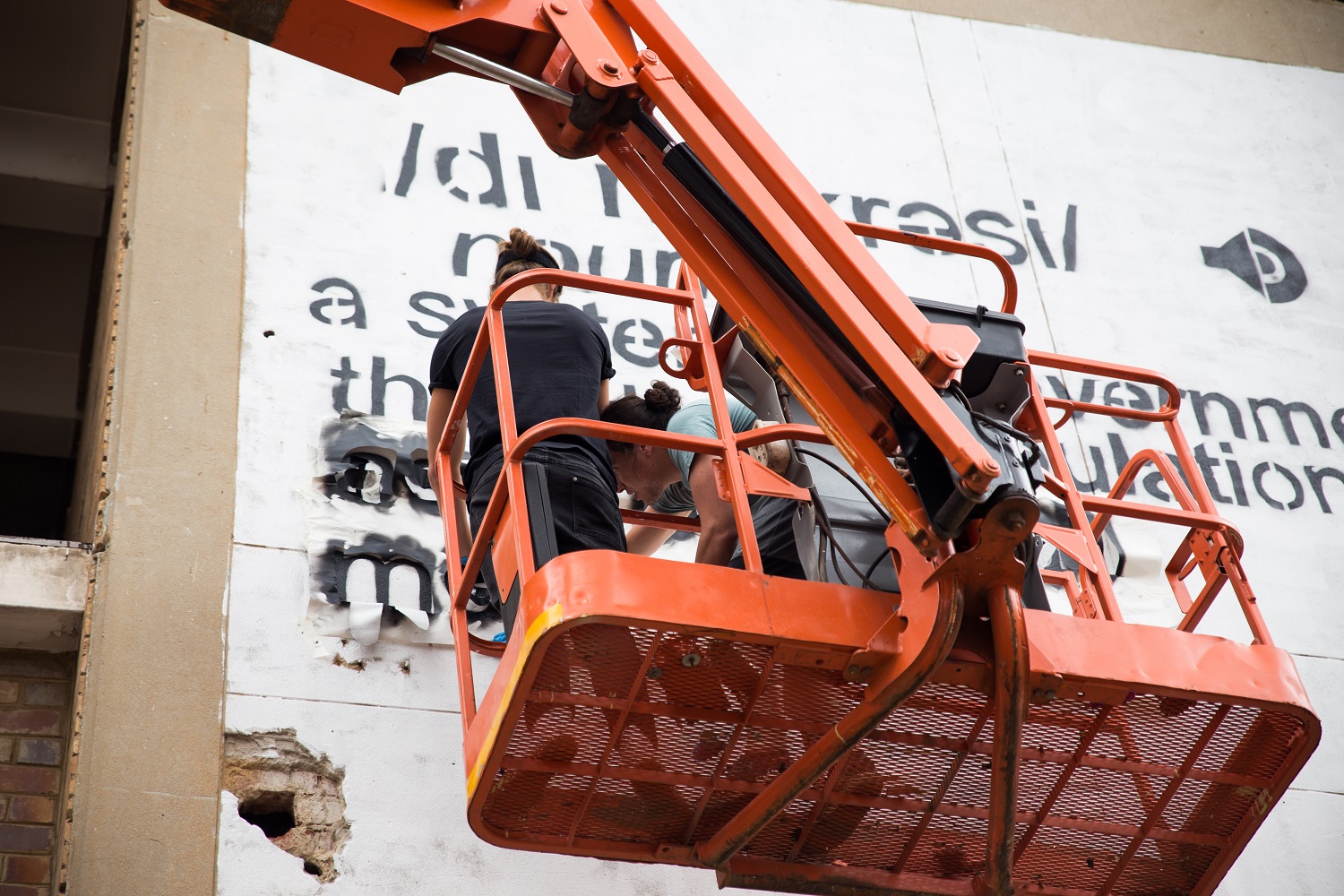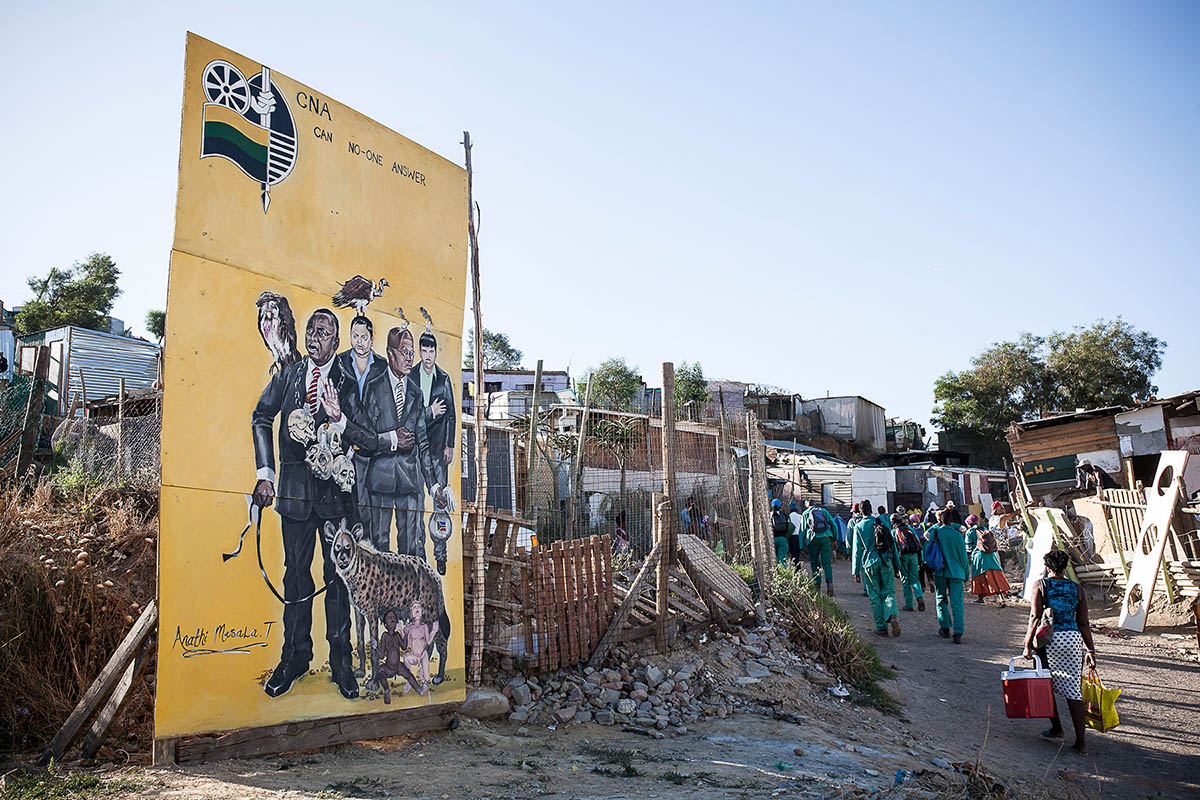Public art, and the claiming of public spaces for social purposes by artist-activists, represents a key opportunity for social movements to engage broad and divided publics in the collective act of challenging state power. Public street art, in particular has a long and proven track record in creating spaces for new democratic practices of civil participation which challenge the state and market.
McCaughan (2012) and others, speak specifically to the aspects of national patriotic symbology, civil liberties, democratic processes, anti-imperialism and international solidarity. Across a range of revolutionary social movements in the 1960’s ‘artists helped to represent and attribute meaning to collective identities signified in terms of gender, sexuality, race, ethnicity, class and nationality’ through which artists challenged central elements of the dominant national and ethic discourses.
In this broader context of social movements, McCaughan argues that artists working in the public domain have an important role to play in the representation and signification of ‘shared yet contentious understandings’ within societies. In essence, helping to create the public ‘visual languages and spaces through which people can perform new collective identities and new forms of meaningful citizenship’. To continue quoting Mccaughan, who captures it so well:
“Artists involved in the Mexican and Chicano movements that formed part of the world revolutions of 1968 played an important role in creating a visual language through which the demands for a more meaningful form of citizenship could be expressed, felt and enacted.”
Art, and in particular public art, that does not simply reflect ideology, but constructs it, has a powerful contribution to make in shifting socially entrenched power structures.
Artist (Anathi Tyawa) claiming public space for his work in Enkanini, Stellenbosch
“Art, and in particular public art, that does not simply reflect ideology, but constructs it, has a powerful contribution to make in shifting socially entrenched power structures.“
McCaughan provides an example of artist Yolanda Lopez’s ‘classic self-portrait in 1978 as a defiant, athletic Virgin of Guadalupe, which challenged patriarchal nations of Chicana Womanhood.’
Writing on the role of cultural mediums in feminist movements, Jane Wolf asserts that ‘Cultural politics is not an optional extra – a respectable engagement in one of the more pleasant sectors of political action. It is a vital enterprise, located at the heart of the complex order which (re)produces sexual divisions in society” (Wolf. 1990, 1).
Perhaps of equal pertinence to the South African condition today, is McCaughan’s reference to Roberta Garner (2001, 559) who asserts that ‘social movements do not mobilise support bases according to demographic characteristics; they create support bases by their practices of framing and defining identities’.
If we accept McCaughan’s assertion that muralists and other public artists ‘helped shape the politics and identities of an international generation of social movement activists’ in the 60’s, 70’s and 90’s the question becomes what role do South African artists need to play, as the need for a unified political resistance movement grows ever more urgent? We are inherently aware that the longer we delay change the harder we will have to fight to achieve it, and that if left to its current course the continuation of political abuse based on the principle of ‘divide and rule’ will deepen our current crisis.
The call then to visual artists today is not to underestimate our role.

Artist (Selwyn Steyn) working on public space outside the SARS offices in Pretoria
” We are inherently aware that the longer we delay change the harder we will have to fight to achieve it, and that if left to its current course the continuation of political abuse based on the principle of ‘divide and rule’ will deepen our current crisis. The call then to visual artists today is not to underestimate our role.“
Why public art? Why street art? – The mainstream media is compromised and galleries are useless because South Africans can’t connect to them.
In the context of a highly biased (one could say captured) state media and a valiant independent media which, due to increased withdrawal of state funding, finds itself increasingly reliant on private sector advertising spend, Marcelle Dawson stresses the need to think of the lack of coverage for certain types of social movements in the mainstream media. Dawson is the South African research chair in Social Change at the University of Johannesburg.
In particular, Dawson highlights the role of micro-media (think street theatre, murals, public radio etc) in the development of social movements. Making particular reference to the historic use of murals for social mobilization in South Africa, she notes ‘Their potential impact lies in their ability to appeal to a wide audience and not only to an elite group of other artists or art critics because they address public issues in a highly accessible manner’ (Dawson 2012, 331).
In addition, many forms of micro-media are target-group specific and limited in reach. A theater performance, for example, despite its power is seen only by the small group present during the time its performed, and a community radio broadcast heard only by the listeners within that community tuned in to that station at that particular time. While there are many advantages to these forms of more personalized communication, they are arguably better suited to addressing more specific, local issues. On the other hand, a well-placed piece of street art situated alongside a congested highway has the potential to reach many hundreds of thousands of people from a very diverse set of backgrounds over months, if not years. The ability of compelling visual messages to be photographed and shared via social media has the potential to multiply this impact many times over.
A second benefit of murals and other visual forms of street art is that they are comparatively cheap and simple to produce: A single can of paint in the hands of the right person can create a viral message that shifts global opinion.
Article by Luke Metelerkamp, originally from www.streetcapture.org
Refs:
Dawson, M.C., 2012. Protest, performance and politics: the use of ‘nano-media’ in social movement activism in South Africa. Research in Drama Education: The Journal of Applied Theatre and Performance, 17(3), pp.321-345.
McCaughan, E. 2012. Art and Social Movements: Cultural Politics in Mexico and Aztlán. Duke University Press


